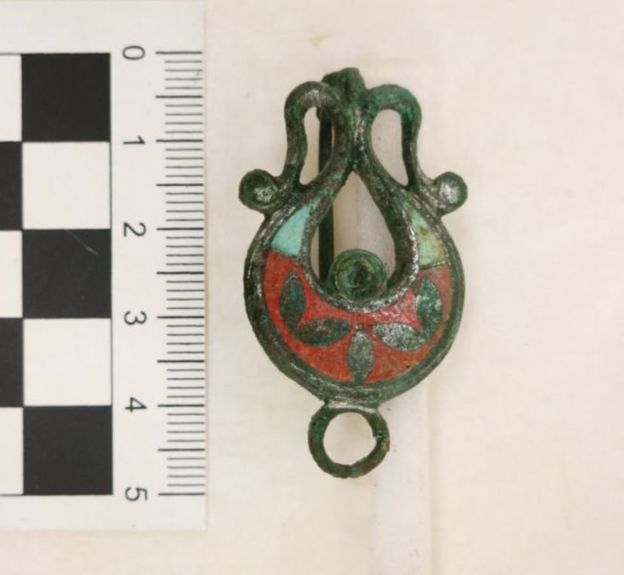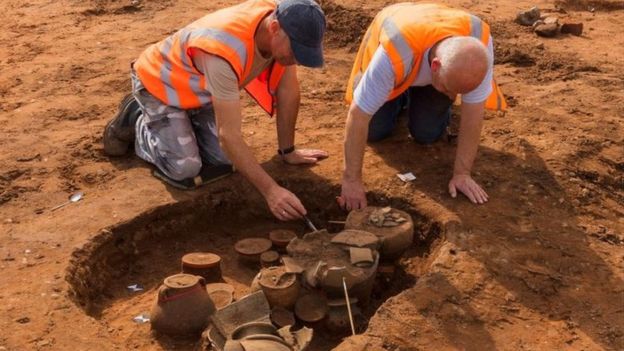Jewellery in Anglo-Saxon graves
Categories: Finds and rescue research abroad , Nálezy nejenom s detektorem ve Velké Británii a Irsku
Beautiful Roman and Anglo-Saxon artefacts were discovered by archaeologists two years ago near Baginton Airport in England. Specifically, they were found in two graves in which a man of high status and a Roman girl between the ages of six and twelve were buried. After much research, it was not until December that experts released what exactly was found in the area.
They expect that the artifacts found will be displayed in a local museum for the public to see. According to the head of the archaeological team, Nigel Page, these are indeed remarkable objects. "Nothing rarer has been found in the area," the archaeologist noted.
The team led by him discovered several pieces of pottery and jewellery in the graves in question. For example, a wine-pouring vessel and a brooch with which a girl was buried. There is also a ring with a cicada on it. This insect was a symbol of resurrection and immortality in ancient times. It also symbolises justice and is said to connect us with the energy of our ancestors. Archaeologists also found a hairpin-shaped ornament in the girl's grave.
According to archaeologists, some of the objects found clearly show that the local inhabitants traded and were in contact with other parts of Europe. There are several clues to this. In all, archaeologists have discovered twelve Anglo-Saxon graves at Baginton. But the two mentioned above contained the most valuable artefacts in the archaeological team's view.
The others also contained various objects, such as the remains of a vessel typical of the inhabitants of northern France and Belgium at the time. "Specifically for the Frankish tribes. This suggests that people moved around a wide area, including Europe, and traded with each other at that time," Page said.
In another grave, archaeologists found the center of a shield, fragments of a blade in a leather sheath and a copper bowl. "This clearly demonstrates that the graves were buried by inhabitants who had a higher status in society. They were certainly not poor. It's also an indication that after the Romans left in the fifth century, the local population prospered," Page believes.
The period of Anglo-Saxon England dates roughly from the end of Roman rule until the eleventh century, when the Normans took over. The famous kingdom of Wessex, for example, was founded at this time, but the end of the reign came as a result of the raids of the Vikingers.



Source: www.bbc.com
The article is included in categories: